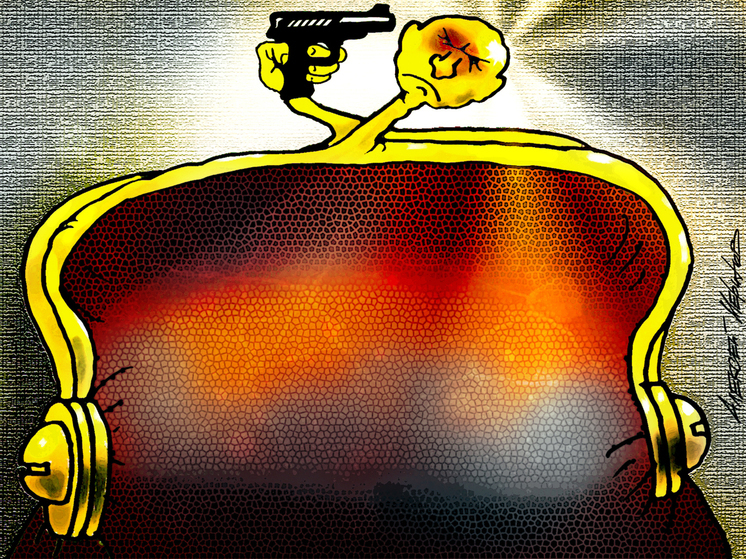
Experts evaluate the consequences of the key rate reduction for loans, deposits, and inflation.

Photo: Alexey Merinov
Russia`s Central Bank initiated a monetary easing cycle this summer, lowering the key interest rate from 21% to 18%. Experts anticipate a further drop to 16% by September. However, forecasts remain mixed: some analysts foresee relief for household debt and cheaper mortgages by 2026, while others caution that a weakening ruble, rising utility costs, and fuel price hikes could limit further easing. Deposit holders are already observing reduced returns, yet loan interest rates are declining at a slower pace. The mortgage sector is projected to experience the most significant shifts, as even a modest rate cut can considerably impact family budgets, although escalating housing prices might negate these benefits. Igor Nikolaev, chief researcher at the Institute of Economics of the Russian Academy of Sciences, and Mark Goykhman, an expert from ForexBY and InvestArena, elaborated on the key rate`s influence on the economy and everyday citizens during a recent online conference.
Summer Reversal of the Key Rate
Q: The Central Bank of Russia consistently raised the key rate from 16% to 21% last year but reversed course this summer, beginning a reduction cycle. What prompted this decision?
Mark Goykhman: Inflation was a primary driver, but other factors were at play. We observed a slowdown in GDP growth, which is a worrying sign. A high interest rate makes loans expensive, leading businesses to limit borrowing and consumers to reduce taking out consumer loans, all of which dampens economic activity. Many experts also warn of a potential recession within the next year. Therefore, lowering the rate became essential to reduce credit costs and stimulate consumer demand and business activity. Two factors converged: decelerating GDP growth and the opportunity to cut the rate amidst falling inflation. Ultimately, the Central Bank`s actions can be considered justified.
Igor Nikolaev: The Central Bank`s main focus is the inflation rate. In spring, initial signs of inflation deceleration appeared: annual inflation dropped from 10.3% in early March. Although the decrease was slight, it was a crucial signal for the Bank of Russia. Opponents highlighted this, arguing that if the regulator bases its policy on inflation, and inflation is falling, maintaining a 21% rate is illogical. Despite persistent high inflation expectations, the Central Bank proceeded to lower the rate by one percentage point in June, followed by another two.
Q: Was the rate cut primarily due to pressure from opponents, or a result of macro-economic analysis?
Igor Nikolaev: It became increasingly difficult for the Central Bank to disregard criticism. However, it`s worth recalling that in December 2023, despite high inflation and rising inflation expectations, the regulator unexpectedly chose not to increase the rate. In the current context, with inflation starting to decline, the Central Bank decided to attempt a policy easing, simultaneously defusing tensions with its critics.
Q: How quickly do banks react to changes in the key rate? Can we expect a swift revision of loan and deposit terms, or will this process take time?
Igor Nikolaev: The reaction is noticeable and prompt. We recall that recently, deposit rates exceeded 20-22%, some reaching as high as 23% depending on the deposit term. Now, following the key rate reduction, one-year deposits are offered at 12-15%, and short-term deposits at around 13-14%. These are no longer the «super-profitable» rates of 20%+. Consequently, business loans have also become considerably cheaper. The banking sector`s adaptation is quite rapid, which was anticipated.
«Deposits Remain Profitable»
Q: Many experts point out that after the key rate reduction, deposits reacted fastest, with their yields falling almost immediately, while loan rates decreased more slowly. Why this disparity?
Mark Goykhman: Indeed. An interesting observation from the Moscow Exchange reveals that many depositors dream of earning a «second salary» from deposit interest. Currently, to achieve an income equivalent to the average salary of 100-400 thousand rubles, one needs to hold between 8 and 22 million rubles in a deposit account. A year ago, about 5 million was sufficient. This indicates a significant increase in the entry threshold. The reason is that banks currently face no liquidity shortage; there`s ample money in the system, and competition for depositors is minimal. Furthermore, with expectations of further key rate cuts, banks preemptively reduce deposit yields faster than loan interest rates. Loan rates are being maintained at previous levels because the key rate hasn`t fallen enough to significantly impact borrowing costs. Consequently, the gap between deposit yields and the Central Bank`s rate is wider than that between the Central Bank`s rate and loan rates. While this is certainly unwelcome for depositors, it reflects the current market dynamics.
Igor Nikolaev: The explanation is straightforward: deposits represent bank expenses, while loans generate bank income. Naturally, banks are quicker to lower deposit interest rates to pay less to depositors, and slower to reduce loan interest rates to avoid diminishing their profits.
Q: What does this mean for individuals? What decisions should people make now: take out loans or wait?
Igor Nikolaev: While inflation is indeed decreasing, many people don`t perceive it, especially when observing fuel prices. However, official statistics show annual inflation below 9%. Deposit rates remain significantly higher than this, making them still profitable. As long as this differential persists, keeping money in deposits makes sense.
Mark Goykhman: We are currently witnessing a rare situation where deposit interest rates exceed inflation. Forecasts suggest the key rate might drop by approximately 1 percentage point to 17% by September. This will eventually lead to lower loan rates. Banks cannot reduce them immediately because they borrow funds from the Central Bank at the current high refinancing rate. Therefore, if money is urgently needed, a loan must be taken now. However, if there`s an option to wait, it`s advisable: by year-end and especially next year, loan rates could fall to 14-15%. This represents a significant difference for mortgages or car loans. Regarding deposits, as long as they yield returns above inflation, it`s wise to maintain investments, at least until the deposit term ends.
Q: Let`s discuss mortgages in more detail. How significantly might housing loan rates decrease? Should borrowers consider refinancing now, or is it better to wait?
Igor Nikolaev: The mortgage situation mirrors the broader lending landscape. While rates are slowly declining, mortgages remain a substantial financial burden for borrowers. Some can afford a loan even under current conditions, but for the vast majority, it`s challenging. Rate reductions are insufficient to make mortgages truly affordable. Furthermore, many subsidized mortgage programs have been curtailed or significantly cut, severely impacting the market.
Mark Goykhman: Mortgages have a distinct aspect: due to the large loan amounts, even a 1-2 percentage point reduction yields a tangible impact. If the rate drops from 18% to 16%, the monthly payment decreases noticeably. However, real estate prices are also crucial. When rates fall, demand for housing increases, pushing prices upward. Therefore, the benefit from a lower rate might partially be «eaten up» by rising prices. Each decision must be made individually, as these factors sometimes balance each other out.
Inflation Could Accelerate Again
Q: What are the key rate forecasts for the remainder of 2025? Under what conditions might the Central Bank halt its reduction or even reverse course?
Igor Nikolaev: I believe we may be overestimating the key rate`s role. There`s a perception that a slight adjustment up or down immediately impacts the economy, but this isn`t the case. The economy is also influenced by tax burdens, administrative barriers, and numerous other factors. While the Central Bank has twice lowered the rate, we haven`t seen an acceleration in GDP growth. Furthermore, there are worrying signs: for example, the volume of incoming payments through the Bank of Russia in July fell by over 8% compared to the second quarter`s average. The Central Bank previously cited this as an economic activity indicator but now refrains from doing so. This suggests that the rate reduction has not yet yielded a tangible effect on economic growth. The Central Bank`s own forecasts for the key rate by year-end range from 16.3% to 18%. The probability of further reductions is high, but I`d estimate it at roughly 60%. Conversely, there`s about a 40% chance the process could halt, especially if external risks emerge: geopolitics, sanctions, or a new wave of inflation. The Central Bank itself warns against expecting a consistent and guaranteed decline.
Mark Goykhman: The danger lies in the potential for inflation to re-accelerate, with inflation expectations playing a significant role. Survey data shows these expectations rose from 13% in summer to 13-15% in August. If people believe prices will increase, they spend more actively, stimulating price growth immediately. Geopolitics is another unpredictable factor, potentially influencing inflation both positively and negatively. Additionally, fiscal risks exist: a growing budget deficit and increased government spending would also intensify inflationary pressure. Therefore, the Central Bank cautiously projects an average rate of 16.3% by year-end but retains room for maneuver. It`s quite possible the rate will remain at 17-18%, with no further reductions.
Q: Let`s get specific: How might prices for various goods and services behave until the end of the year? Could the inflation-lowering trend reverse? Which economic sectors will be the first to feel the effects of the Central Bank`s easing policy?
Igor Nikolaev: Current deflation is largely attributable to seasonal fruit and vegetable factors. August is harvest time, which temporarily lowers prices. However, the effect is very limited: the last weekly deflation was only 0.04% – practically imperceptible. Yet, in August, cucumbers, for instance, rose by 5%, which raises questions, as it`s still harvest season. This is a worrying sign that the influence of seasonal produce might quickly diminish. I anticipate the inflation reduction due to the harvest will conclude in a week or two at most. There are also delayed factors: increases in tariffs for natural monopolies and utility services. Their impact isn`t immediate but manifests a month or two later as businesses and households pass these costs onto consumers. Furthermore, the risk of a weakening ruble persists. All these factors could maintain inflation at a higher level. We shouldn`t expect an explosive surge in prices – the Bank of Russia is keeping the situation under control – but neither should we make overly optimistic forecasts. The inflation target of 6-7% by year-end is unlikely to be met; we`ll more likely see annual inflation around 10%, which would still be a decent outcome.
Mark Goykhman: Official inflation currently stands at approximately 8%. The seasonal factor is evident: in August, potatoes fell by 11%, tomatoes by 7%, and onions by 7%. Cucumbers, conversely, became more expensive – an exception, but overall, we observe seasonal price drops for vegetables. However, a far more significant factor is fuel prices. Wholesale gasoline has surged by 32% since the beginning of the year, hitting record highs. Fuel costs impact everything: delivery, logistics, and the cost of goods. Therefore, the rising prices of gasoline and utility services are precisely what could limit further disinflation. The Central Bank aims for 6-7% in 2025, but there`s a risk that inflation could be higher – 7-8% or even more. Adding to this is the risk of a depreciating ruble. August is traditionally considered a challenging month for the Russian economy, but this year`s August difficulties might shift to September. The exchange rate could slightly decrease to 84-85 rubles per dollar. While not critical on its own, combined with other factors towards the year`s end, this could amplify inflationary pressure and restrict opportunities for further key rate reductions.
Igor Nikolaev: August shifting to September… and perhaps even further to October and November.
Author: Lyudmila Alexandrova











